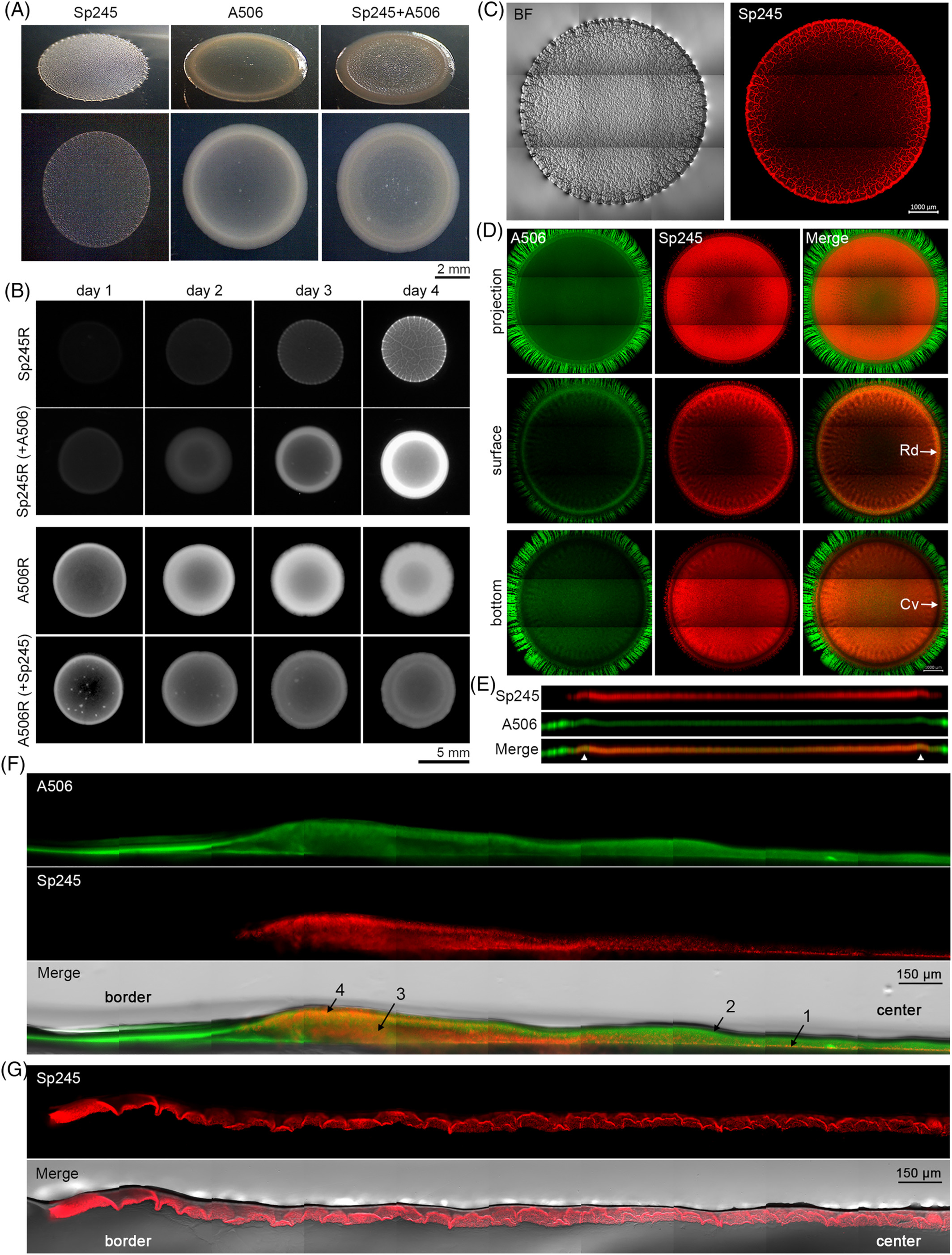Environmental microbiology, 05 September 2022, 2022
Abstract:
Biofilms are essential for plant-associated bacteria to colonize their host. In this work, we analysed the interaction of Azospirillum baldaniorum Sp245 and Pseudomonas fluorescens A506 in mixed macrocolony biofilms. We identified certain culture conditions where A. baldaniorum Sp245 exploits P. fluorescens A506 to boost its growth. Azospirillum growth increased proportionally to the initial number of pseudomonads building the biofilm, which in turn were negatively affected in their growth. Physical contact with P. fluorescens A506 was essential for A. baldaniorum Sp245 growth increase. Biofilm ultrastructure analysis revealed that Pseudomonas produces a thick structure that hosts Azospirillum cells in its interior. Additional experimentation demonstrated that Azospirillum growth boost is compromised when interacting with biofilm-deficient Pseudomonas mutants, and that a low oxygen concentration strongly induce A. baldaniorum Sp245 growth, overriding Pseudomonas stimulation. In this line, we used a microaerophilia reporter strain of A. baldaniorum Sp245 to confirm that dual-species macrocolonies contain a higher number of cells under microaerophilic conditions. Taking all the results into consideration, we propose that A. baldaniorum Sp245 can benefit from P. fluorescens A506 partnership in mixed biofilms by taking advantage of the low oxygen concentration and scaffold made up of Pseudomonas-derived matrix, to expand its growth.
Macrocolonies phenotype, strains distribution and biofilm structure.
